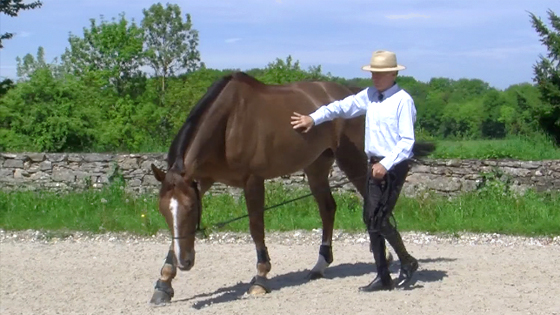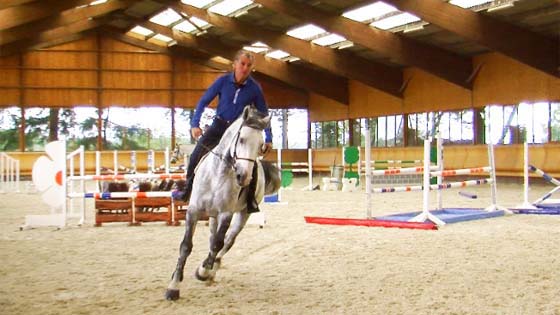Understand and focusing on how the horse’s back functions

Riders have to be aware that whatever the type of riding they practise, the motion of the horse’s top line is extremely important. We have to devote a special attention to this area, especially during the warm-up session.
The goal of this session is to bring awareness to the importance of the correct motion of the horse’s top-line, and that is, whatever the discipline of riding. The rider has to devote a special attention to this area, especially during the warm-up session.
Michel’s training and teaching methods grant importance to the horse fitness level, especially to the back muscles development. The spine and all the muscles that surround it, forms the main beam for the horse’s body. Only because of its correct motion, the horse is able to carry the rider’s weight and push with strength to walk, trot, canter, turn, jump and perform dressage airs….
The rider must assess any weakness, pain or blocking of energy that would affect the top-line -Assuming the rider has a good knowledge of the horse’s anatomy and a good feeling to be able to detect any problems. If one loves his/her horse, one must try hard to be attentive to the horse’s reactions in order to understand what will trigger some defensive reactions. For example, when such or such actions are made, or when the saddle is put on his back, when the girth is being tied. A horse, who bucks, bites, or kicks, is trying to get a message across.
To Michel, the most important condition for the correct motion of the horse’s back is the freedom of his neck. Michel explains why he advocates working the horse stretching his neck, especially when warming him up whether he is under saddle or on a lunge line. He also gives the rules to follow, in order to obtain the horse to flex his neck yet being friendly to his vertebrae.
This video displays a warm-up session taking place outdoor on a grass footing at Michel Robert’s yard.

